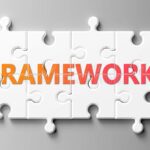In today’s relentless business environment, merely keeping afloat is not enough. Companies must evolve, pivot, and often fundamentally rethink their entire operation to stay relevant and competitive. Unlike traditional change management, where tweaks and refinements are standard, transformational consulting calls for profound, sweeping changes that can breathe new life into an organization facing disruptive technologies, shifting market demands, or deep-rooted inefficiencies.
Understanding Transformation
Transformation goes beyond adjustment—it’s about reimagining your organization from the ground up. This intensive process typically involves:
Strategic Transformation: Ensuring the organization’s strategy aligns with future opportunities and challenges.
Operational Transformation: Revamping processes to maximize efficiency, cut costs, and better service delivery.
Cultural Transformation: Building a culture that supports change, fosters innovation, and boosts employee engagement.
Digital Transformation: Leveraging digital technology across the board to redefine processes, services, and customer interactions.
CHANGE framework: a Roadmap to Transformation
Comprehend – Hypothesize – Architect – Nagivate – Generate – Evaluate
Comprehend: Building a Strong Foundation
The journey begins with a thorough understanding of where you are today. This involves comprehensive assessments, stakeholder interviews, and market analysis, leveraging tools like SWOT and PESTEL. This step ensures that any transformation plan is grounded in reality, with a clear grasp of the organization’s current state and the external environment.
Hypothesize: Imagining the Possibilities
With a solid understanding of the present, we move on to envisioning the future. We develop hypotheses on which changes will create the most significant impact. By mapping out various scenarios, we can prioritize the initiatives that promise the greatest benefits, helping the organization visualize potential outcomes and prepare effectively for them.
Architect: Crafting the Blueprint
Next, we design a detailed transformation strategy and roadmap. This stage is all about defining new business models, processes, structures, and technology needs, along with the cultural shifts required to support these changes. The goal is to provide a clear, actionable plan that guides every step of the transformation process.
Navigate: Implementing the Change
Transformation is not just a plan; it’s active change. Implementing initiatives is where the rubber meets the road. Utilizing change management principles and agile methodologies, we begin with pilot projects to test and refine our approach. Clear communication and adequate training are crucial to ensure smooth transitions and manage resistance effectively.
Generate: Building Momentum
Early successes are vital to fuel further change. By expanding successful initiatives to other parts of the organization, we build momentum and bolster support for broader transformation efforts. These quick wins help embed the changes and ensure they become a permanent part of the organizational fabric.
Evaluate: Ensuring Long-Term Success
Finally, continuous evaluation is essential to ensure that the transformation remains on track. Regularly reviewing outcomes against set goals and adjusting strategies as needed keeps the organization aligned with its transformation objectives, ready to adapt to new challenges and opportunities.












About The Author
InnoValeur
Conseil, intégration, et support sur SAP